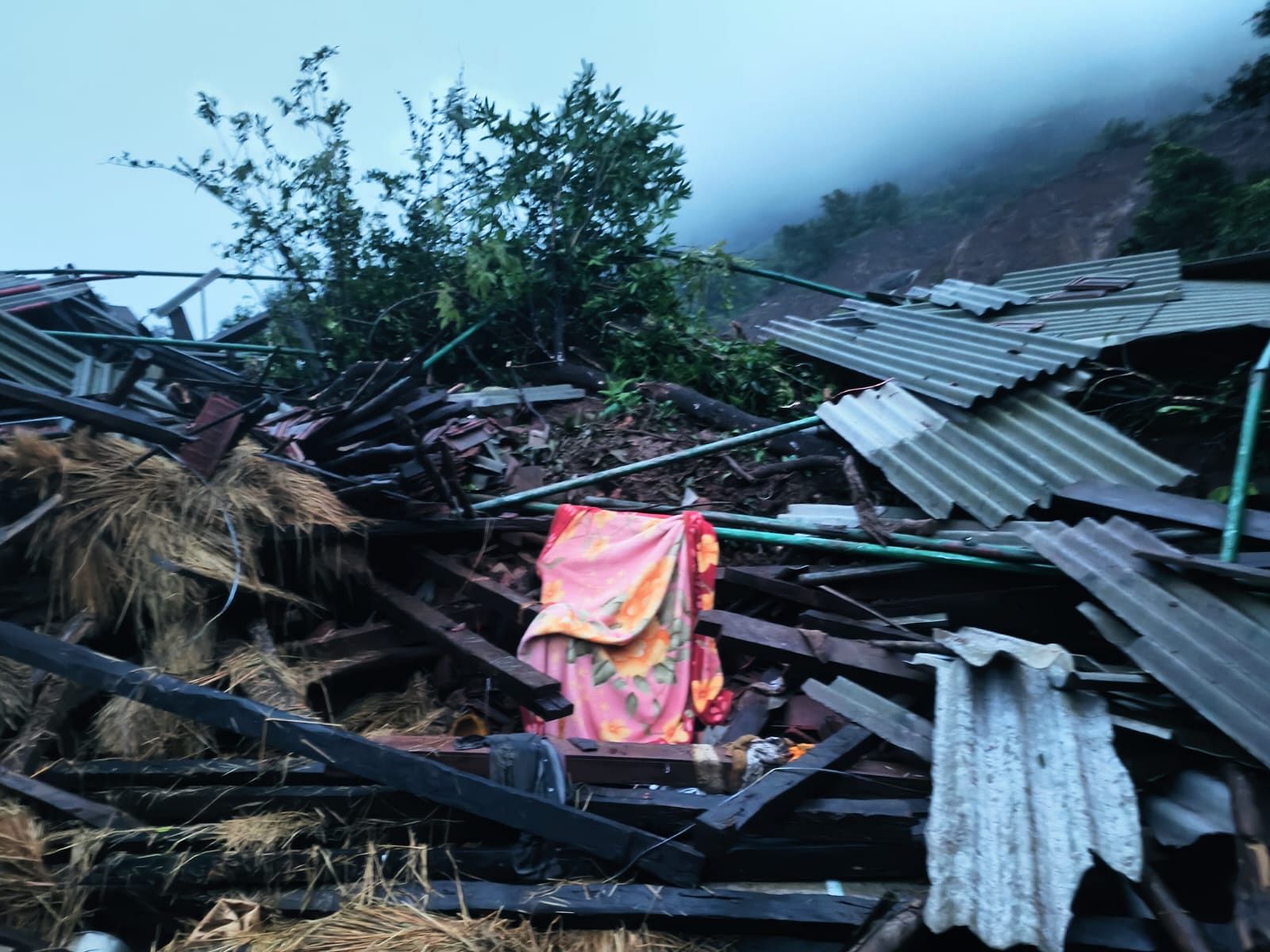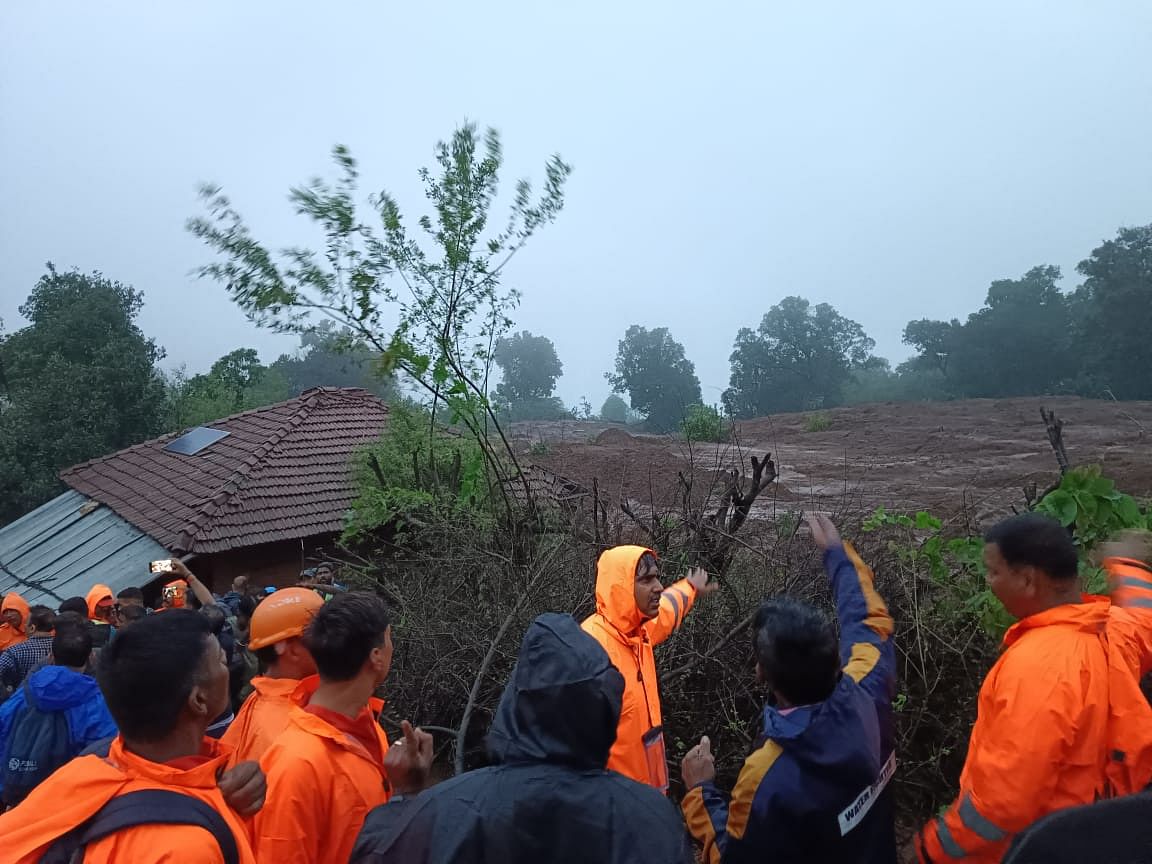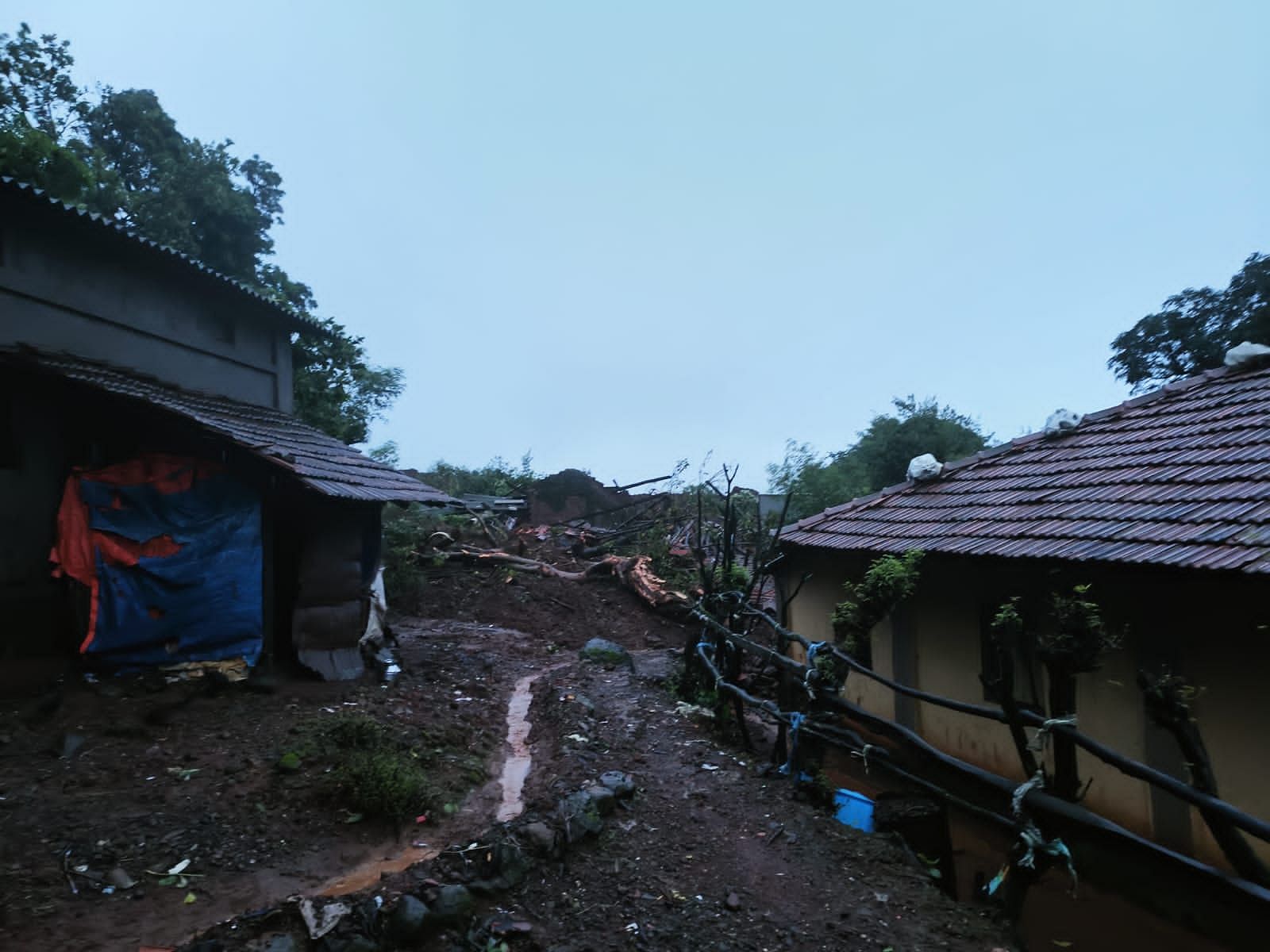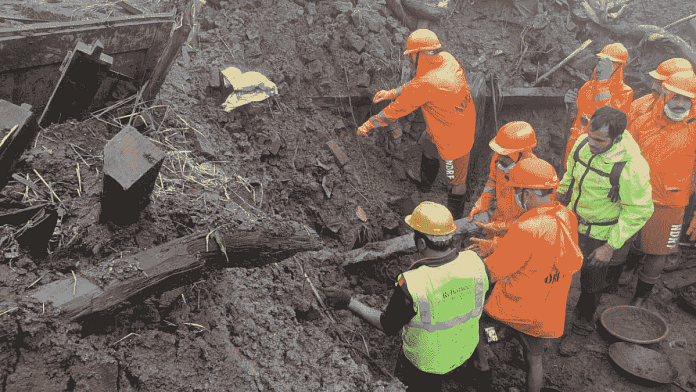Mumbai: It’s been nearly two full days since a landslide at the tribal Irshalwadi hamlet in Maharashtra’s Raigad district claimed at least 22 people and is feared to have buried at least a 100 more. And yet, incessant rains and the terrain are becoming major impediments to rescuers as they plough through layers of mud and slush for reaching those still trapped underneath.
At 11 pm Wednesday, a massive landslide buried the hamlet of 228 people. So far, 98 people have been taken to safety, according to government data.
“The weather is really bad for us to carry out the rescue operations,” Deepak Tiwari, a senior official of the National Disaster Response Force (NDRF), told ThePrint. Four teams of NDRF, including Tiwari’s, are currently engaged with teams of Raigad Police and local authorities in the rescue operations. “No matter how much we try to clear, there’s more sliding down the hill. The weather is not conducive at all.”

Irshalwadi is near the Irshalgad fort — a popular trekking destination located 90 km from Mumbai and 60 km from Pune. Most of the villagers belong to the Thakur Adivasi tribe, many of whom depend on agriculture for a living.
Although Raigad is no stranger to landslides, especially during the monsoons, the government says that this particular village does not feature in its list of “landslide-prone” villages, identified before this year’s monsoon.
Addressing the Maharashtra assembly during its ongoing Monsoon Session Thursday, Deputy Chief Minister Devendra Fadnavis said: “The vulnerability mapping of all the villages with their core and buffer zones was completed and a list of those villages, which are prone to landslides, was prepared. Irshalwadi was not in the list of landslide-prone villages.”
Chief Minister Eknath Shinde, who visited Irshawadi Thursday, said that his government was trying to verify how many people were still missing. “Some of the villagers were out working in the fields; some of the children were at ashram schools in Panvel. We are trying to identify them and verify their names,” he told reporters.
In the assembly, he said the conditions at Irshalwadi were “very bad”. “I witnessed it myself. I salute the rescuers who went there so high up with their resources,” Shinde told the House.
The government has announced a compensation of Rs 5 lakh for those who died.
But the opposition has trained its gun on the Shinde-Fadnavis government — on the floor of the assembly Thursday, Congress state president and Sakoli MLA Nana Patole asked for the status of the Madhav Gadgil report on the ecology of the Western Ghats.
Appointed by the Congress-led United Progressive Alliance (UPA) in 2010 under the chairmanship of ecologist Madhav Gadgil, the commission, which submitted its report in 2011, suggested dividing the Western Ghats into ecologically sensitive zones and also recommended against diverting rivers, among other things, in an attempt to protect the mountain range’s ecology.

‘Rescue challenging’
July is considered the wettest month of the year, especially in India’s western coast, including Raigad. According to government data, the area received 499 mm rainfall in 72 hours, which caused the soil to loosen up and cave in.
Rescuers say that the area’s terrain and the continuous rain are impeding operations and that it could be difficult to give an exact number of those trapped underneath. The road leading to the hamlet is muddy and slushy, making the 1.5 hour trek from the bottom of the hill hard. According to NDRF’s Tiwari, rescuers are using JCB machines to clear the mud, but even this is a feat especially given the lack of a designated path.
Tiwari said six bodies were pulled out from the mud Friday and that operations will continue Saturday.

The India Meteorological Department has forecast more rains in the area. Officials from the weather department issued an red alert (extremely heavy rainfall) for Raigad district on Wednesday and have predicted heavy to very heavy rainfall until Sunday.
But this accident isn’t isolated — Maharashtra has witnessed similar landslides in July, with entire villages being flattened in torrential rains on at least two occasions.
A landslide in Malin in Pune’s Ambegaon tehsil on 30 July, 2014, killed 151 lives. Nearly seven years later, on 22 July, 2021, a massive hillock came crashing down on Taliye village in Raigad’s Mahad claiming 89 lives. The same year, another landslide in Mumbai’s eastern suburbs of Chembur and Vikhroli killed at least 30 people.
In fact, data released last June by Raigad’s disaster management authorities showed at least 300 people were killed in landslides in the last 18 years.
Opposition leaders like Shiv Sena (UBT) leader Aaditya Thackeray, meanwhile, are pressing for a climate action plan.
“Such incidents are increasing across the country and that’s why the climate action plan is a necessity,” said Thackeray, Maharashtra’s former environment minister who visited Irshalwadi Thursday. “The extreme climate conditions need to be tackled and concrete steps must be taken.”
(Edited by Uttara Ramaswamy)



